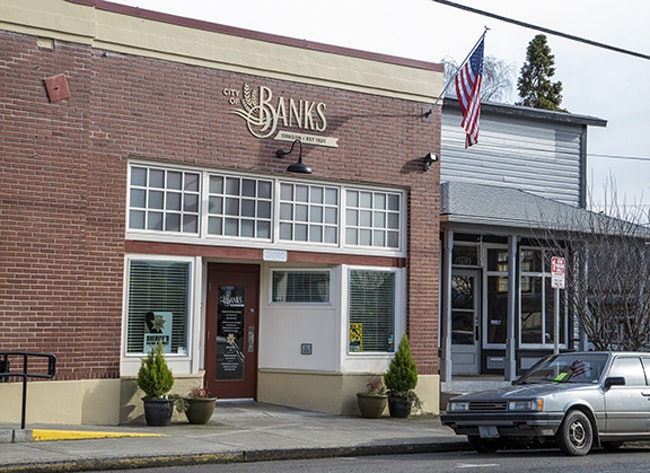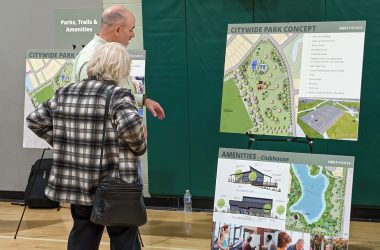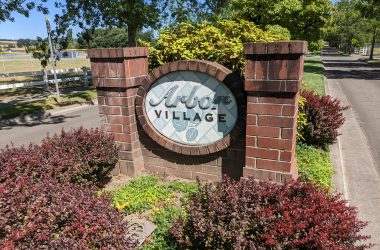 Banks City Hall. Photo: Brenda Schaffer
Banks City Hall. Photo: Brenda Schaffer
BANKS – The Banks City Council approved its 2020-21 work plan, which focuses on the local government’s approach to sustainable growth, and managing resources and community services.
Every fiscal municipal year, which runs from July 1 – June 30, the city council and administrative staff draft a working plan that outlines topics, information, and which handful of issues may be the cynosure of the year ahead.
Mission statement
The Banks City Council work plan’s mission statement says elected and administrative officials will strive to effectively manage resources while continuing to enrich the community, provide long-term stability, sustainable growth, and ample community services while maintaining environmental responsibility and providing a clean, safe community where people feel comfortable living.
“Basically, the work plan is how (elected officials and city department heads) come together to set goals,” Banks City Manager Jolynn Becker said. “For instance, (the council) is looking into putting a roundabout or a stoplight at the intersection of (NW) Main Street, and (NW) Banks Road where it turns into (NW) Cedar Canyon Road. It also wants to continue to enhance existing businesses along Main Street, maximize the use of existing parking areas, find areas for additional parking, and grow the retail base to meet the needs of residents and tourists.”
[We rely on subscribers to keep the lights on at the Banks Post. Support us with a digital subscription: Click here to start]
2037 vision plan
The council work plan also includes the “Banks Vision 2037 Plan,” which are six-recommendations originally put forth in 2017.
The six points include recognizing and building three districts within Banks — Southtown, Midtown, and the traditional/historic Downtown. Commerce Street and the Mill District could be considered a sub-district of downtown, the plan says.
Creating new upgrades to streetscapes so the three Main Street districts display uniformity, yet with subtle differences that are unique to each area.
Constructing new multi-use public plazas for use by community members and visitors/tourists, preferably connecting Main Street to the new developable lands in the Westside urban growth boundary.
Continuing to promote Banks as an emerging community rich with recreational opportunities, including an abundance of trailheads, support areas, and the creation of new trailheads.
Finally, the plan calls for setting and codifying new standards, specific to each district, for commercial and industrial structures and developments, in order to create quality and to appropriate a rural feel within the individual development areas.
2018 to 2023 roadmap
The city of Banks has four goals in its future objectives roadmap. Those objectives are:
— Adequate Housing — Developing a clear plan and system for providing water infrastructure to support new development; providing a flexible code and process to encourage various housing types; and proactively collaborating with private developers.
— Local Jobs — Enhancing access to broadband infrastructure; focusing on the Business Retention and Expansion (BRE) program; and preparing local industrial sites.
— Vibrant Main Street — Enhancing existing businesses along Main Street; maximizing the use of existing parking areas; and growing the retail base to meet the needs of tourists and residents.
— Thriving Tourism — Proactively pursuing the Main Street Plaza project, and supporting tourist amenity development.
New trailhead parking
The council work plan outlines two projects that focus on consistent development and expansion within the city of Banks and its urban growth boundary — additional parking for the Banks-Vernonia Trailhead, and the construction of a community center.
Additional parking for the Banks-Vernonia Trailhead is spearheaded by the Banks City Council, the Washington County Land Use and Transportation Board (LUT), the Salmonberry Trail Intergovernmental Agency, and Oregon State Parks and Recreation.
The city, since 2017, actively has been attempting to create new parking around the trailhead as use has grown in popularity. Work was underway in 2017 to improve overflow in the parking area but construction was stopped when the Oregon Department of Transportation (ODOT) said a 100-foot buffer was required between the railroad tracks and the driveway.
Currently, the Salmonberry Trail Intergovernmental Agency is creating concept plans to develop additional parking, and it hopes to engage in conversation with the LUT to see if the board will approve the project, which is not slated to begin construction until 2021-22.
The council’s work plan says currently the cost of the project is unknown, but that the funding source likely would come from “general funds, grants, and [sic] state park.”
Building a Banks community center
This project is part of the city’s Urban Renewal Agency (URA) plans and the Banks Vision 2037 Plan. Its main goals are to research different options, identify land where the community center will be built, and to secure long-term funding from the URA.
Those leading the project to create a Banks community center include the city council, the URA, the Banks Economic Development Commission, and city staff.
The cost of the project depends on the actual size, scope, and extent of the community center’s structures. Planned funding sources include private investment for building structures and city of Banks/URA funds for a public right-of-way plaza and the necessary infrastructure.
Non-operational vehicle ordinance
The city’s work plan details three projects it plans to undertake in order to maintain and upkeep the city’s aesthetics — the creation of a non-operational vehicle ordinance; the continuation of emergency preparedness coordination and plans; and transferring paper documents to Laserfiche.
The city’s work plan says a non-operational vehicle ordinance is necessary “to keep properties from being devalued due to junk, attractive nuisances, and hazards.”
The city manager’s office, the public works department, and police are developing an ordinance that will be presented to the city council for approval. The ordinance is likely to require a fine — similar to ordinances in other Oregon cities — to be paid by the owner of a non-operational vehicle or vehicles visibly parked on property within the Banks city limits.
Details of the ordinance, however, are not included in the council’s work plan as the final draft of the new code has yet to be completed.
Emergency preparedness
The city also plans to continue coordinating emergency preparedness exercises among city staff, Banks Fire District No. 13, the Banks School District, and the Banks City Council.
Each group developed a tabletop exercise in October 2019 that created several posts and tasks that need to be addressed as part of the daily operations of the city.
The council’s work plan says the city, along with the other aforementioned agencies, applied for a grant to help with tasks needed to be performed during a catastrophic emergency, such as a wildfire or major earthquake. The grant amount sought ranges from $5,000 to $15,000.
Laserfiche
The city has many official documents that are paper-based and not electronic. Additionally, the city has several areas where paper documents are stored, including copies of documents that pertain to more than one department.
The city wants to transfer those documents to Laserfiche, which is similar to microfiche used by libraries across Oregon and the U.S., but Laserfiche is a privately-owned software development company that creates records management.
According to FinancesOnline.com, which provides reviews of tech products similar to the product reviews provided by ConsumerReports.org, Laserfiche pricing is based on a per-user, per-month basis, and typically runs $60-per-month per user, or $54-per-month if paid annually.
Community services
Finally, the city’s work plan calls for projects that provide new events and opportunities.
Park improvements top the list of community services. They would include creating a basketball court, a covered area, a concrete extension, and additional playground equipment. Currently, the city’s Park, Recreation and Tree Board is creating a nonprofit organization called “Friends of Banks Parks” to help offset the cost of improvements.
The work plan says a new basketball court, which includes two full-sized courts and lighting, will cost $300,000. The new covered area will cost $20,000 for materials and another $20,000 for labor and prepping the site for construction. The additional concrete extension with a rail around the edges will cost $38,000. New playground equipment, primarily for use by pre-schoolers, would cost an additional $35,000 — $15,000 for materials and $20,000 for labor and prepping the site.
City events on hold due to Covid-19
In addition to the park improvements, the city also planned a series of quarterly community events, but those events are on hold indefinitely due to the outbreak of Covid-19. The city’s community events calendar is available for viewing on its website.
The Banks City Council’s 2020-21 work plan is available to read as part of the May 12 city council agenda packet. You can read the council’s work plan here by scrolling down to page 48 of the council agenda packet.






